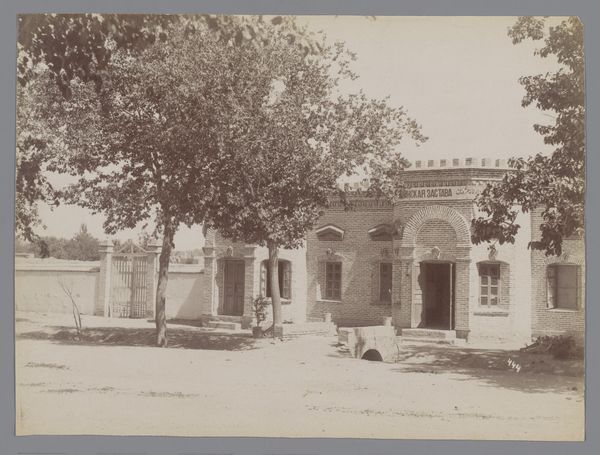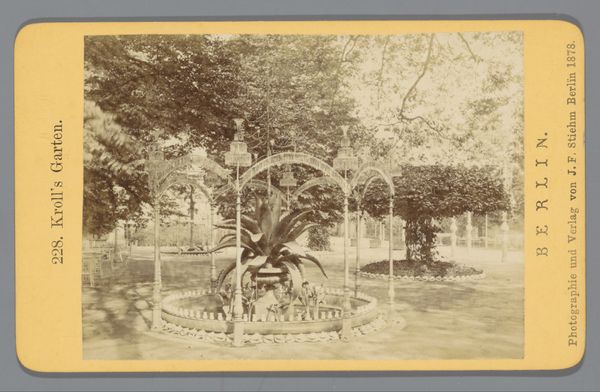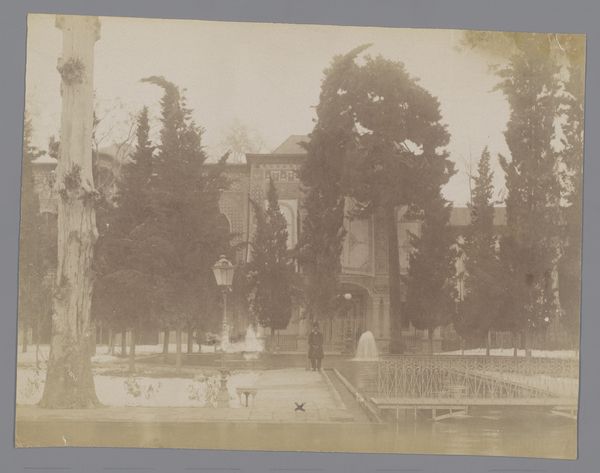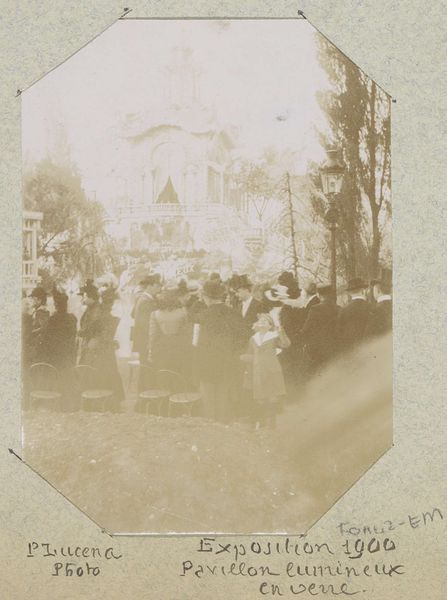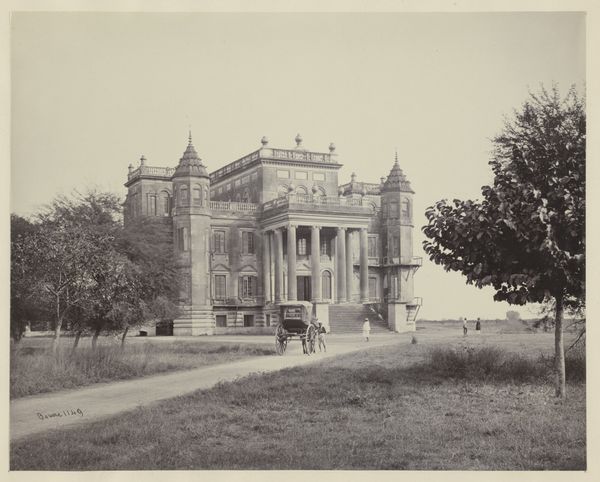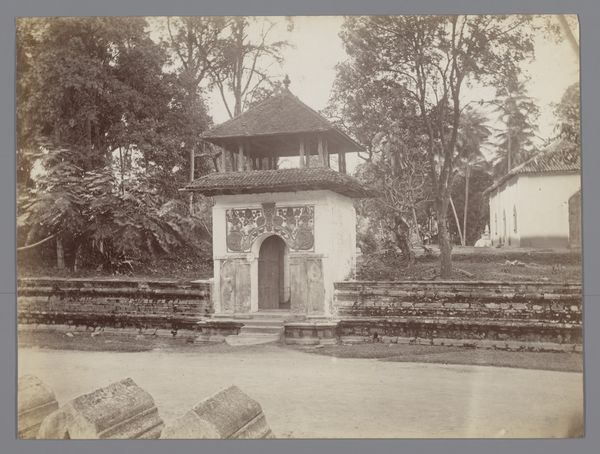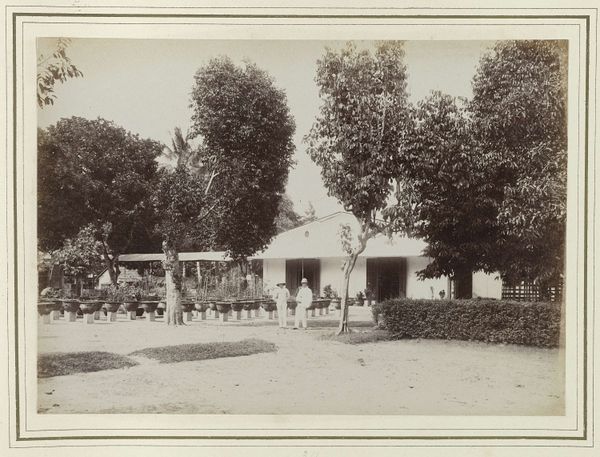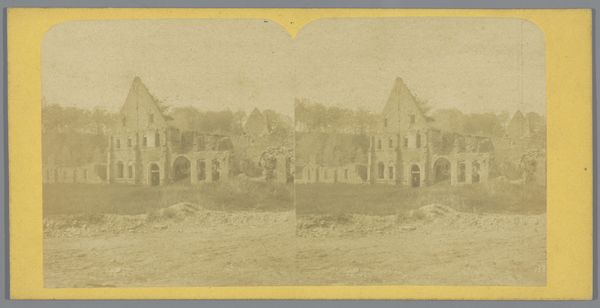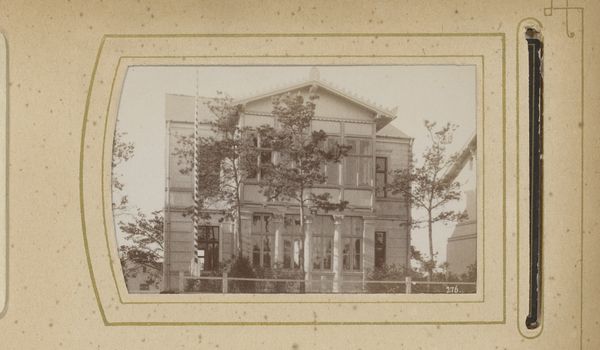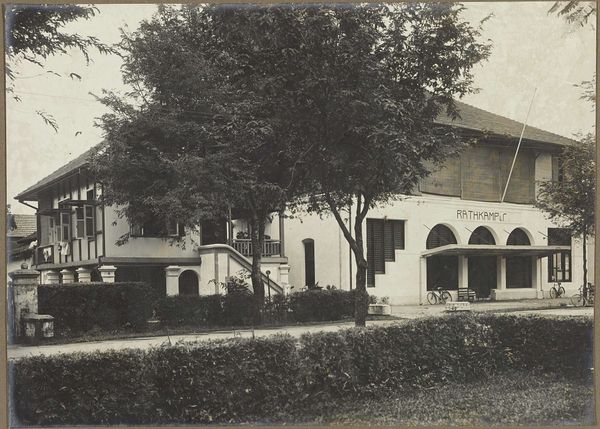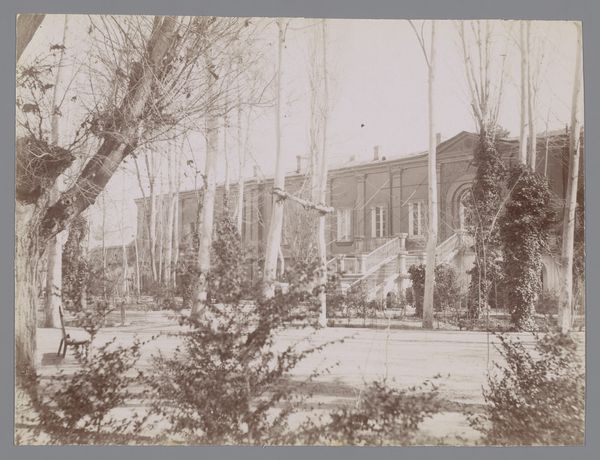![Paleis [?] ("Topkaneh, Teheran"), Teheran, Iran by Antoine Sevruguin](/_next/image?url=https%3A%2F%2Fd2w8kbdekdi1gv.cloudfront.net%2FeyJidWNrZXQiOiAiYXJ0ZXJhLWltYWdlcy1idWNrZXQiLCAia2V5IjogImFydHdvcmtzLzQwYTlmMzViLWM3OGItNGVhNi04MGEwLTNmMzQ5NjE5ODQwMS80MGE5ZjM1Yi1jNzhiLTRlYTYtODBhMC0zZjM0OTYxOTg0MDFfZnVsbC5qcGciLCAiZWRpdHMiOiB7InJlc2l6ZSI6IHsid2lkdGgiOiAxOTIwLCAiaGVpZ2h0IjogMTkyMCwgImZpdCI6ICJpbnNpZGUifX19&w=3840&q=75)
photography, albumen-print
#
photography
#
orientalism
#
cityscape
#
islamic-art
#
albumen-print
Dimensions: height 206 mm, width 155 mm
Copyright: Rijks Museum: Open Domain
Editor: This albumen print, attributed to Antoine Sevruguin and taken between 1880 and 1910, presents the "Paleis [?] ('Topkaneh, Teheran'), Teheran, Iran." The atmosphere seems so still, almost frozen in time. The cannons lined up create a palpable sense of authority and a touch of the unsettling. What strikes you when you look at it? Curator: The cannons are indeed arresting. Sevruguin, a photographer of Armenian-Georgian descent operating in Persia, catered significantly to European travelers and documented Persian society under the Qajar dynasty. The positioning of the cannons directly in front of what is presumably the Topkaneh Palace raises questions about the function of such images at the time, especially their consumption by Western audiences eager for depictions of the "Orient." Editor: Do you think the photograph served more of a documentary purpose, or something else entirely? Curator: It's likely both. Photographs like these, circulated within an orientalist framework, played a role in constructing and reinforcing Western perceptions of Persia as a land of both exotic beauty and military power. Consider the role of museums and world fairs during this period. How do you think this image might have been presented in those contexts, influencing public opinion and reinforcing colonial power dynamics? Editor: It could have been seen as an almost ethnographic record, reinforcing stereotypes of a powerful but ‘other’ culture. Curator: Precisely. Sevruguin's work, while appearing objective, existed within the visual and political economy of his time, and participated in constructing a very specific, and powerful, image of Persia. The cannons themselves might speak more to anxieties within the state than actual power, but to foreign audiences may portray the inverse. Editor: So, what seems like a straightforward cityscape actually carries a lot of complex social and political messaging. Thank you for offering this lens, I wouldn't have thought about this work in such depth! Curator: My pleasure. There is more than meets the eye, when we engage critically.
Comments
No comments
Be the first to comment and join the conversation on the ultimate creative platform.
